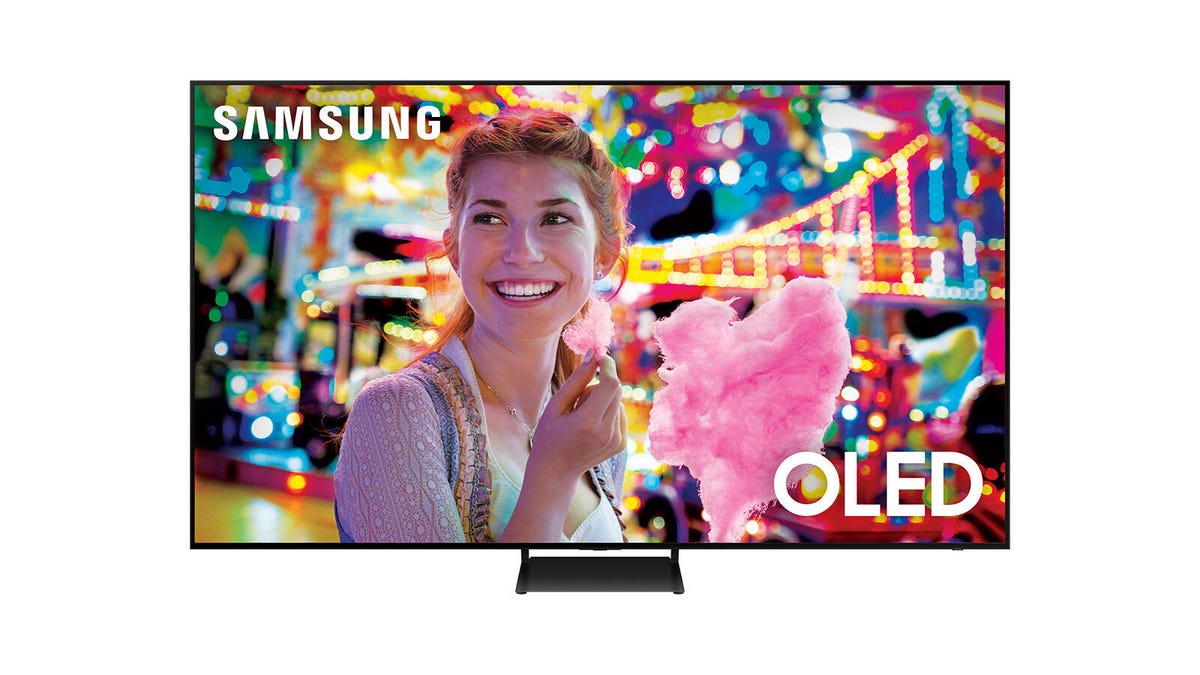 Why You Can Trust CNET
Why You Can Trust CNET Samsung Debuts 83-Inch OLED TV, Matches LG's Second-Biggest OLED
The largest Samsung OLED TV yet will ship later this month for $5,400.

Attention high-end TV shoppers: You'll soon have a new gigantic-screen OLED TV to consider. Samsung has just introduced its biggest OLED screen size, 83 inches, going inch-for-inch against rival LG. The Samsung QN83S90C costs a cool $5,400 and will be available later in July according to Samsung's website.
High-end TVs with OLED screens deliver the best picture quality in my side-by-side comparison tests. This year Samsung's QD-OLED technology has laid down a more serious challenge than ever to LG, but notably the QN83S90C does not use QD-OLED tech itself. Instead it uses traditional OLED technology, known as "WOLED," the same technology used by LG.
LG offers OLED TVs in seven sizes, from 42 up to 97 inches -- although the latter size costs $25,000. Now Samsung has four OLED screen sizes in total, from 55 to 83 inches.
I haven't formally reviewed any Samsung OLED TVs yet, but I did review the LG C3 recently and it was excellent. Judging from their specifications and similar screen technologies, I expect the new 83-inch Samsung to offer similar image quality to the C3. The 83-inch LG C3 costs $4,800 -- $500 less than the new 83-inch Samsung.
The 83-inch Samsung is a member of the S90C series, the smaller sizes of which do use QD-OLED technology. Those smaller sizes also support 144Hz gaming while the 83-inch S90C goes up to 120Hz input -- that differece isn't a big deal, however, since 144Hz is only usable by PC gamers with high-end video cards. Like other Samsung TVs, the new OLEDs have built-in cloud gaming, a feature I like but hardly consider must-have.
One difference between the S90C and the step-up S95C series, which currently tops out at 77 inches, is the inclusion of a One Connect box with the S95C, which lets you connect your devices (like a cable box or game console) to the box instead of directly to the TV and run a single cable between the box and TV to ease installation.
Big TVs are gradually becoming more affordable, but huge-screen OLED TVs remain significantly more expensive than their non-OLED counterparts. Samsung's superb 85-inch QN90B QLED TV, for example, costs roughly half as much ($2,300) as its new 83-inch OLED TV.
Correction, July 12: An earlier version of this story attributed incorrect screen technology to the 83-inch OLED TV. It uses standard OLED (WOLED) tech and supports 120Hz input.

